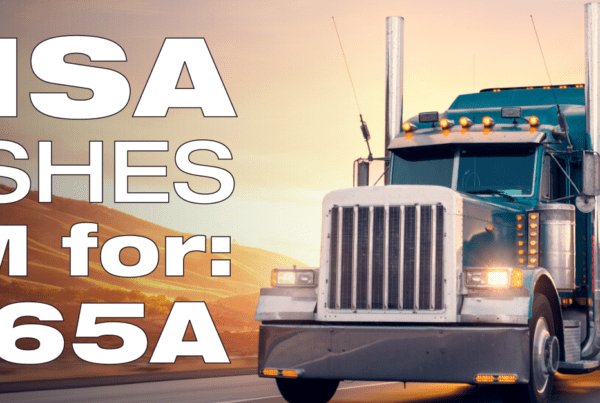Calling All ERG Users
Many have heard the phrase, “Calling all cars” used in an emergency situation. The phrase references back to the old police radio days. It was used to call all patrol cars to help other officers. The phrase was the title for an old radio show back in the 1930’s, but also more recently as an episode of HBO’s “The Sopranos”.
How is that phrase being used here? The Pipeline and Hazardous Materials Safety Administration (PHMSA) has put out the call for input on ways to improve the Emergency Response Guidebook, or ERG. The new version is due for publication in 2020. To see the full notice go to https://www.gpo.gov/fdsys/pkg/FR-2018-05-23/pdf/2018-11055.pdf
What is the ERG?
It is a booklet that provides technical information and advice for those responding to emergencies involving hazardous materials as defined in 49 CFR. It is used mainly by emergency personnel such as police, fire-fighters, paramedics or other emergency responders. First issued in 1973, PHMSA’s goal is for all emergency response folks to have immediate access to it. As time has progressed there is a free online version and a downloadable app. Other countries may also have their own versions of the ERG. It is updated every 4 years.
It is broken down by the following color-coded sections:
- White pages – At the start of the booklet, gives the instructions for how to use it and pictures of the different hazard labels or OSHA pictograms that are likely.
- Yellow pages – These list the identification numbers in order so someone could use the number to locate the appropriate response needed.
- Blue pages – These have the shipping names of materials in alphabetical order which are used to locate the appropriate response.
- Orange pages – The actual emergency response procedures are in these pages. They include the list of potential hazards, public safety information, emergency response for fire, spills and first aid.
- Green pages – Here are the tables for initial isolation, protective distances and water-reactive materials. Both tables are helpful when dealing with toxic gases or for knowing the appropriate extinguishing media to use.
Why are They Asking for Input Now?
Why ask for input now? PHMSA wants information. They want to modify and make the ERG better than it currently is. In the notice and upcoming announcements, PHMSA wants comments users of the book wish to provide but also for answers to a set of 10 specific questions.
Those questions are as follows:
- How can we make the ERG more user-friendly for first responders during the initial response phase of a hazardous materials transportation incident? Please provide examples.
- Does ERG2016 effectively emphasize the most useful information for the initial response phase?
- Have you encountered conflicting or ambiguous guidance messages when using the ERG and other sources of technical information?
- Are there ways we could improve the White Pages? For example:
- Did you find the “How to Use this Guidebook” flow chart on page 1 of ERG2016 useful in understanding how to use the ERG? Please explain why or why not.
- Do you believe we should reformat the tables, charts, and the information they provide (i.e., Table of Placards, Rail Identification Chart, and Road Trailer Identification Chart)? What changes do you think would make them more useful, clear, and easy to read and use?
- What other identification charts should we add, if any? What other subject(s) should we address?
- How could we improve the information the ERG provides on chemical, biological, and radiological transportation incidents? Can you suggest information to include or remove?
- Do you find the terms in the Glossary appropriate and current? What terms should we add? What terms should we remove or change?
- In ERG2016’s Yellow or Blue Pages, have you found any identification number and/or material name that seems to be assigned to an incorrect Guide number? If so, please note the identification number, material name, the Guide number, and suggest a new Guide number with your reasons why.
- Do the Orange Guide Pages contain recommendations and responses that are appropriate to the material they are assigned to? If not, please explain and recommend a correction.
- How could we change/improve the introduction and description of the Green Pages, or any of the following tables?
- Table 1— “Initial Isolation and Protective Action Distances”
- Table 2— “Water Reactive Materials Which Produce Toxic Gases”
- Table 3— “Initial Isolation and Protective Action Distances for Different Quantities of Six Common TIH Gases”
- When calling any of the Emergency Response Telephone Numbers listed in ERG 2016, have you experienced a busy telephone line, disconnection, or no response? If so, please describe.
- What format(s) of the ERG do you use (hardcopy, electronic, online, mobile applications, etc.), and why?
- How often do you use the ERG in a dangerous goods transportation emergency?
How Can I Make a Difference?
Send your comments or answers to the above questions to [email protected] Here is your chance to make a tool better. Don’t miss it.
If you don’t have a copy of the current ERG, get in touch with us today or order yours online.





